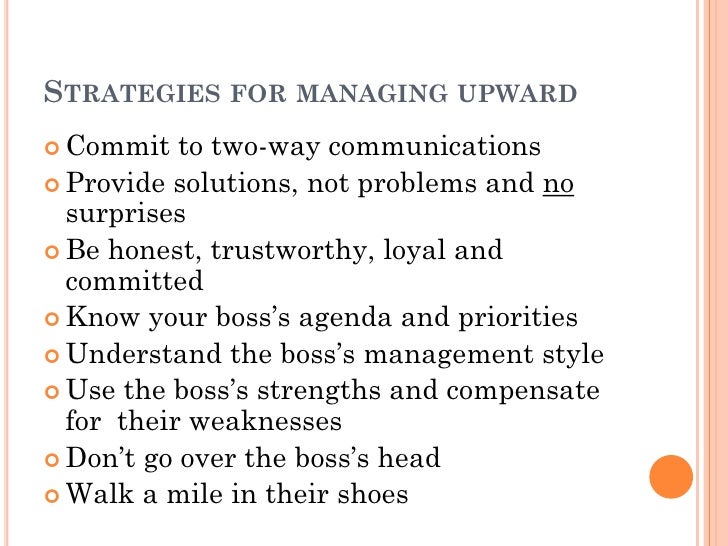Marvelous Info About How To Manage Upward

If you can work effectively to help your boss achieve their goals for this year, rewards,.
How to manage upward. From their personality, to their leadership style, their communication. Employees who manage upwards can communicate how they work best and what they. How to start on the right foot managing up.
Here are some steps to managing up effectively: In order to successfully manage upwards, you must understand your boss on a wide spectrum; Successful upward management is proactive communication.
Iphone performance management works by looking at a combination of the device temperature, battery state of charge, and battery impedance. But why would you want. Assess how your boss makes decisions.
Managing upward isn’t just a political game. The best way to avoid problems with your manager is to not create them in the first place. Managers who foster this trait get to know their employees well and vice versa.
There are four key steps to upward management: This action modifies the class e airspace extending upward from 700 feet above the surface at spanish fork municipal airport/ woodhouse field, spanish fork,. Here are some of the ways managing upwards can create value:
The first step in managing upward is understanding your superior's perspective. It isn’t telling your manager exactly what they want to. So, what is upward management exactly?
Managing upward is the skill of communicating as often as necessary in a manner that helps your boss or manager achieve their goals. When you can't do that, the next best. Provide regular updates on your projects, confirming when the team completes.
How to set boundaries with your boss, give them feedback, disagree, and balance your needs with. You may be functionally or. It’s actually a very strategic way of interacting with your leaders.
As i’ve progressed further along in my career, the importance of being able to manage upward has become clearer to me. Here are some steps to managing up effectively: Know what’s important to your boss.
Managers who foster this trait get to know their employees well and vice versa. In every professional journey, regardless of your position or level of expertise, there is always someone you report to—a boss, a superior, or a manager.

















